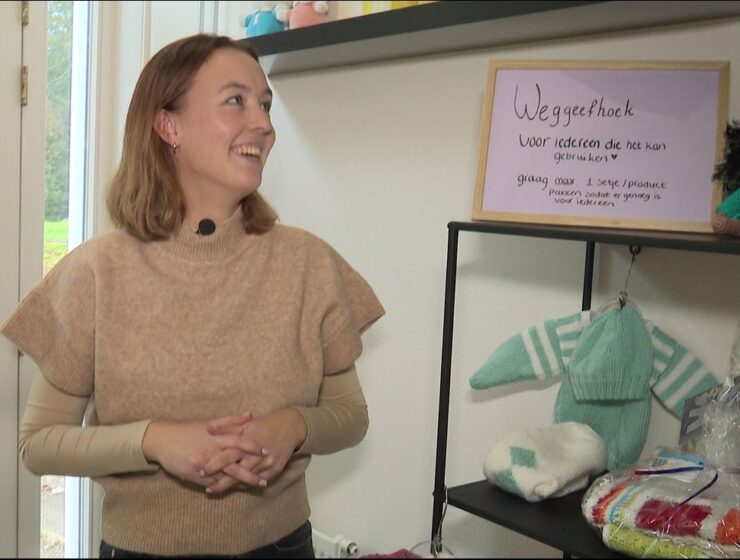The Truth About Growth Scans and Inductions: What You Need to Know
Pregnancy is a special time full of anticipation, but also full of questions and uncertainties. One of the topics that many pregnant women are concerned with is the reliability of growth scans and the need for inductions, especially when there is a suspected large baby. In this blog we dive deep into a recent study that examines these issues: the “Big Baby” trial. This study, published in The Lancet in 2025, provides valuable insights that you as a pregnant woman need to know in order to make well-informed decisions.
At Verloskundigen Dronten we believe that knowledge is essential for a positive pregnancy and birth experience. If you are looking for a midwife in Dronten, we are ready to support you with personal and expert care.
What is shoulder dystocia and why is it important?
Shoulder dystocia is a complication during childbirth in which the baby's shoulder blade becomes trapped behind the mother's pubic bone after the baby's head is delivered. This can lead to serious problems, such as lack of oxygen to the baby, fractures, or nerve damage. The risk is higher in babies who large for gestational age (LGA), or larger than 95% of babies of the same gestational age. Therefore, researchers and midwives are trying to find ways to reduce this risk, for example by growth scans or inductions.
It's a topic that often gets less attention, but is crucial to understand when you're pregnant and making choices about your birth.
The reliability of growth scans after 36 weeks
Growth scans are ultrasound scans that monitor your baby's growth by measuring the circumference of the abdomen, leg length and head. These measurements estimate the expected birth weight. However, after 36 weeks, these scans become less reliable and it is often incorrectly estimated that the baby will be on the large side at birth. After 36 weeks, the baby has often descended and it is therefore not possible to measure the head circumference correctly, which makes the estimate less accurate because the head circumference is part of the total measurement of the baby's estimated weight.
In the “Big Baby” trial, conducted between June 2018 and October 2021, only 40-42% of babies who were estimated as oversized by ultrasound were actually oversized at birth. This high percentage of incorrect measurements shows that growth scans late in pregnancy often overestimate the size of the baby. This can lead to unnecessary concerns or proposals for inductions that are not necessary.
If you have a midwife in Dronten If you are looking for a growth scan, we can help you interpret the results of a growth scan and discuss what this means for you.
The “Big Baby” Trial Research: What Are the Findings?
The “Big Baby” trial was a large-scale study in the United Kingdom involving 2,893 pregnant women. The aim was to investigate whether early induction of labor (between 38^0 and 38^4 weeks) reduces the risk of shoulder dystocia in babies diagnosed as LGA. The study was even stopped early because shoulder dystocia was less common than expected.
The main results were:
- In the intention-to-treat analysis, there was no significant difference in shoulder dystocia between the induction group (2,3%) and the standard care group (3,1%).
- In the per-protocol analysis, which strictly looked at women treated according to the protocol, the risk was lower in the induction group (2.3% vs. 3.7%).
- Early induction led to fewer cesarean sections and postpartum hemorrhage, but a longer hospital stay before delivery.
- There were no differences in neonatal outcomes or serious adverse events.
The study concludes that early induction from 38 weeks may be a safe option, but the benefits have not been convincingly proven.
Implications for pregnant women and midwives
This study offers pregnant women an additional option to reduce the risk of shoulder dystocia, but it also highlights the limitations of growth scans. It is important to discuss with your midwife what the best choice is for your situation. Some women feel reassured by an early induction, while others prefer to wait for a natural birth. Induction also has several risks, which is why a midwife will always advise to pursue a natural birth if the health of the baby and mother allows it.
At Verloskundigen Dronten we guide you through these choices. We take the time to answer your questions and make sure you feel comfortable with your decisions. Our personal approach makes us a trusted partner. midwife in Dronten.
When should you consider a growth scan after 36 weeks?
Growth scans after 36 weeks can be useful if there were concerns about a possible growth retardation of the baby, but not if it concerns the suspicion of a larger baby. After 36 weeks, a growth scan is no longer reliable, because the head cannot be measured properly and therefore the total estimated weight is larger. Smaller growth can often be measured, which is why a growth scan is sometimes advised in the case of too small growth.
Some hospitals also offer growth scans after 36 weeks as standard and use the results to subsequently propose inductions. The most frequently mentioned reason for the hospital to suggest an induction is the expectation of a baby that is too large. This can be confusing, especially because the accuracy of these scans after 36 weeks is very limited. Midwifery practices, such as Verloskundigen Dronten, therefore do not offer this as standard. Offering inductions is more common when a hospital has a partnership of gynaecologists, because their income depends on the number of inductions. If an induction is discussed and you become confused or uncertain, please come to us.
If you are unsure about an offered growth scan or a proposed induction, discuss this with your midwife. We will help you weigh the pros and cons and make a choice that suits you.
How do you interpret the results of a growth scan?
A growth scan gives an estimate of your baby's birth weight, but this estimate is not always accurate, especially after 36 weeks. If the scan suggests that your baby is large, this does not automatically mean that induction is necessary. It is important to put the results into context, taking into account your medical history and personal preferences. For example, if only the baby's belly is a bit larger, this does not mean that the baby is too big as a whole. There are plenty of babies with a larger belly who are born very healthy without complications. Induction for this reason is therefore not necessary. Only if the baby's total weight is too large (95% or more), it may be wise to see whether induction is necessary.
At Verloskundigen Dronten we take the time to discuss the results with you. We look at the bigger picture and help you make a well-considered decision.
Shared decision making: The role of midwives Dronten
Making decisions during your pregnancy can be overwhelming, especially when you are getting mixed advice. At Verloskundigen Dronten we are here to support you. Whether it is a growth scan, an induction or another choice, we ensure that you are well informed and your wishes are central. Do not let a hospital influence or confuse you into choosing an induction, but make a well-considered decision and make sure you discuss this with your midwife first so that they can help you by giving you honest information.
If midwife in Dronten we offer personal care and attention. Contact us for a conversation, so that together we can see what is best for you and your baby.
References and additional information
For more information on this topic, you can consult these resources:
This resource provides an in-depth look at the research and findings.
Conclusion
The “Big Baby” trial shows that early induction could prevent shoulder dystocia in a very small number of cases, but this was so rare that the study was even stopped early. In addition, offering growth scans after 36 weeks is not reliable and the measurement of a baby that is too big after 36 weeks is therefore also not reliable. As a pregnant woman, you deserve clear information to make choices that suit you and that are best for you and the baby. At Verloskundigen Dronten we are ready to guide you and to discuss with you what the best options are for you. Contact us for personal advice and discover why we are the trusted midwife in Dronten are.
Overview of key findings
| Aspect | Details |
|---|---|
| Reliability of growth scans | Less accurate after 36 weeks; only 40-42% of the overgrown baby estimates are actually correct. |
| Shoulder dystocia risk | 2.3% in induction group vs. 3.1-3.7% in standard care group. |
| Benefits of Natural Childbirth | Less chance of medical intervention (cut or vacuum pump, cesarean section). Faster recovery. |
| Conclusion of the research | Early introduction safe, but benefit not convincing. |
With kind regards,
Midwives Dronten
Address: De Barrage 97, 8252 HR Dronten
Phone: 0321 382 473










